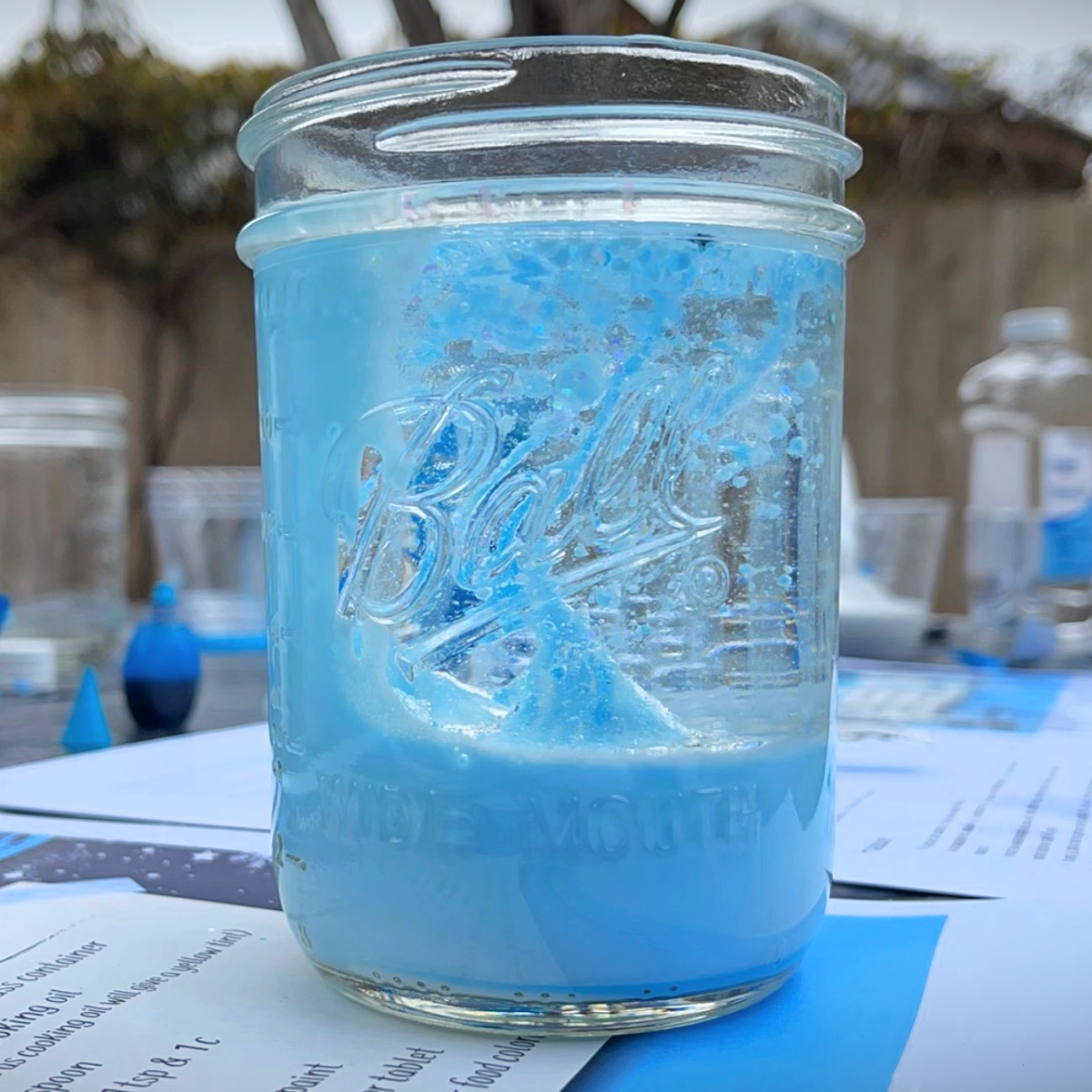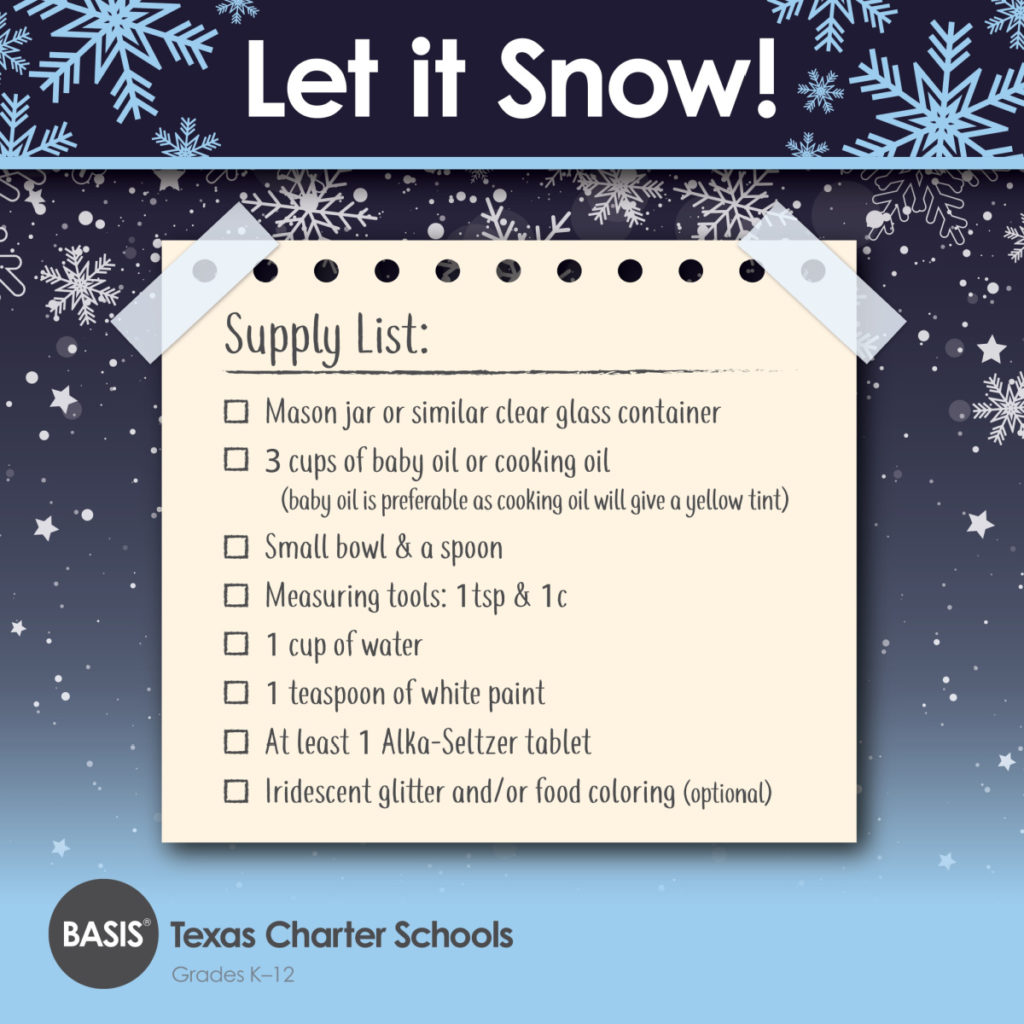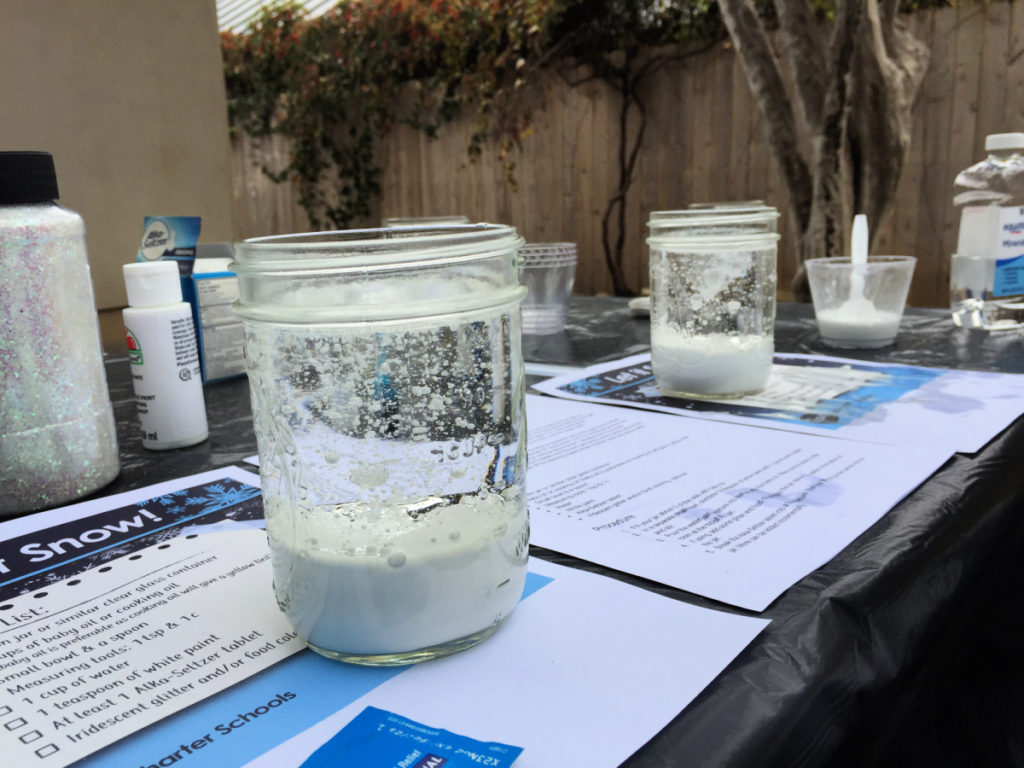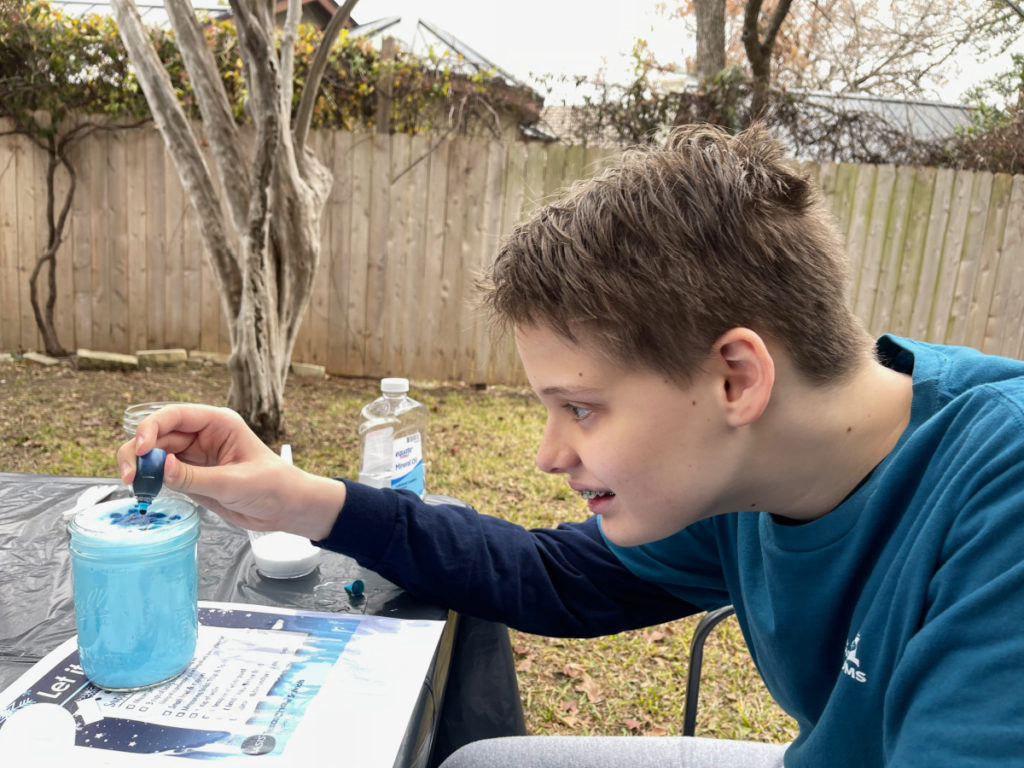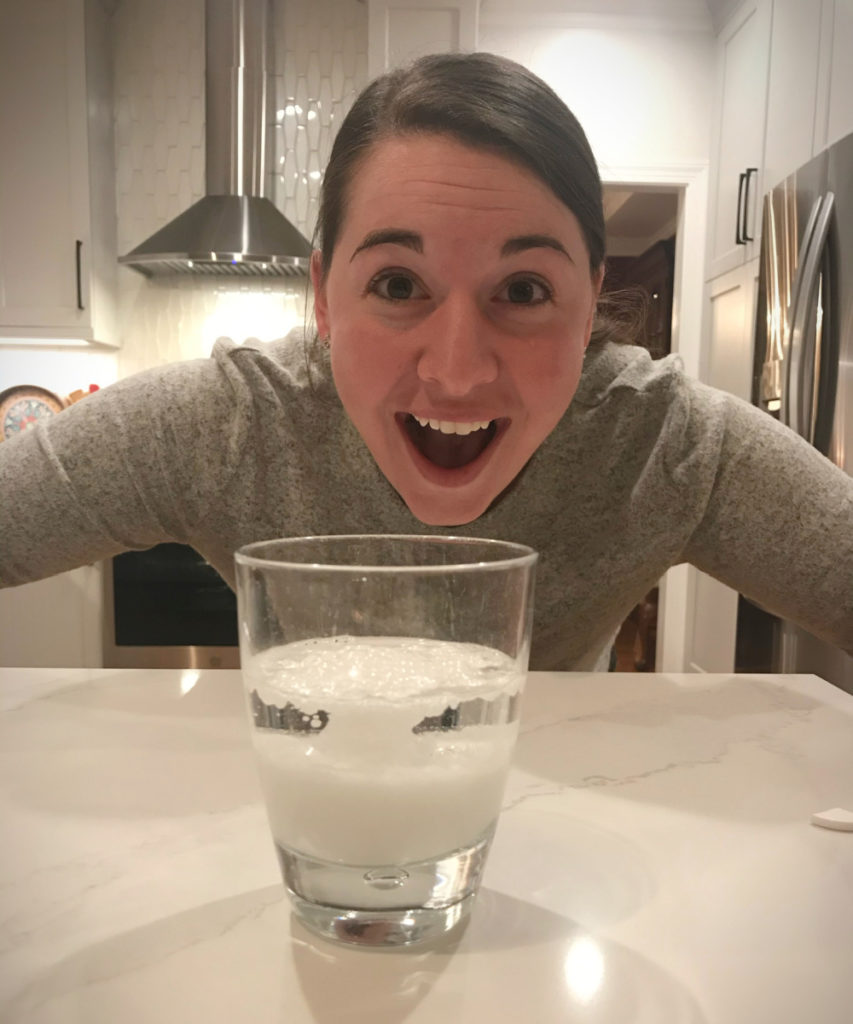Whether you are dreaming of snow or surrounded by mounds of it, this kitchen chemistry snow experiment brings the magic of winter (without the cold!) right into your home! We have advice about how to get started making a snowstorm in a bottle, plus tips for tailoring this activity to children of different ages. For more ideas about experiences you can do while learning at home with your kids, visit our guide, Charter a Voyage of Learning.
Teaching in California and Arizona, many of my science students had never seen snow before! They listened with wonder as I told them stories of “snow days” from my childhood growing up on the east coast. Because they were so curious about snow, I decided that if the snow wouldn’t fall outside, then we’d bring it inside. And the best part is this snow experiment comes without the cold and the hassle, but with lots of fun learning opportunities instead. Here are some basic materials you will need.
Snow Experiment Materials
- Mason jar or similar clear glass container
- 3 cups of baby oil or cooking oil (baby oil is preferable as cooking oil will give a yellow tint)
- Small bowl and a spoon
- Measuring tools: 1 teaspoon and 1 liquid measuring cup
- 1 cup of warm water
- 1 teaspoon of white paint
- 1 Alka-Seltzer tablet
- Iridescent glitter and/or food coloring (optional)
Snow Experiment Procedure
- Fill your jar about ¾ full with baby oil.
- In a separate small bowl, combine 1 teaspoon of white paint with 1 cup of warm water and stir with a spoon.
- Pour the water/paint mixture into the jar with the baby oil. Make sure to leave a little room at the top of the jar.
- If you’re using the optional glitter and food coloring, add those to the jar now. Allow them to settle to the bottom of the jar.
- Break an Alka-Seltzer tablet into a few pieces. Start by dropping a two pieces into the jar. More can be added incrementally.
- Observe the magic of the snow storm in your jar!
Snowstorm in a Bottle for Preschoolers
As always, I love to begin science experiments with a story time for young learners. The Story of Snow: The Science of Winter’s Wonder by Mark Cassino is a fantastic book to kick off this experiment, but any book that features snow and gets your child excited about the topic is a perfect pick. For example, The Snowy Day by Ezra Jack Keats is a story-time favorite that you may already have on your bookshelf at home.
Let your child know that today they are going to make their very own snowstorm right in their kitchen! They may be tempted to think that what they make is real snow. Use this as a learning opportunity for your child. Referencing back to the book you read together, ask them to compare and contrast the snow in the book with the snowstorm in a bottle that they just made.
Snowstorm in a Bottle for Grade Schoolers
Children in middle grades will likely recognize that the snowstorm they just created is not real snow. This provides a great opportunity to make further connections. After pouring in the oil and water into the jar, but before adding the Alka-Seltzer tablet, ask your child to pause and make an observation. What do you notice? You will likely see a water layer at the bottom of the jar with the oil rising to the top of the jar. This is because water is denser than oil, but polarity also has an impact. If your child is ready to take this experiment further, continue to read on.
Snowstorm in a Bottle for Upper Schoolers
Your teen may have heard the expression “like dissolves like” in their science classes. Ask them to think about how that expression applies to the experiment that they just conducted. Water is a polar molecule, while oil is a nonpolar molecule. This makes water and oil immiscible—in other words, water and oil do not mix. They can can test this out for themselves. At the end of the experiment, cap the jar and shake it vigorously, then set it down again; you will see that the water and oil will still separate and settle into different layers.
What about the bubbles (or “snow droplets”) that we saw? Alka-Seltzer tablets contain sodium bicarbonate (NaHCO3) and citric acid. The citric acid reacts with the sodium bicarbonate and water to form effervescence, i.e., BUBBLES! The bubbles pick up some of the white paint and carry it to the surface of the jar. When the bubbles pop, the paint trickles back down to the bottom of the jar starting the cycle again, thus making a “snowstorm” effect!
Read More About the Chemistry of Snow
- Read more about the chemistry behind this experiment at Scientific American.
- Read more about the science of snow at Britannica Kids.
Charter Moms Chats
Watch Audrey Hagopian, Regional Director of Primary Schools for BASIS.ed, demonstrate the snowstorm in a bottle kitchen chemistry activity in a Charter Moms Chats interview with Inga Cotton on Friday, January 29 at 4 PM Central on Facebook and YouTube.
For more ideas about summer experiences you can do while learning at home with your kids, visit the main page, Charter a Voyage of Learning. If you love kitchen chemistry, check out Elephant Toothpaste and Weather Science, both also presented by Audrey Hagopian.
Follow Yelp San Antonio for fun, kid-friendly virtual events, like this one.
About the Author
Audrey Hagopian is the Regional Director of Primary Schools for BASIS.ed. Formerly a 4th and 5th grade science teacher, Audrey still loves sharing the wonderful world of chemistry with her community! When not stirring up experiments in her kitchen and running a school, Audrey enjoys reading, cooking, and staying sane in quarantine by hiking and mountain biking.
If your child enjoyed this activity, check out BASIS Charter Schools. They offer an accelerated liberal-arts curriculum, with a STEM focus, at tuition-free public charter schools in Arizona, Louisiana, Texas, and Washington, D.C. Learn more about BASIS Charter Schools in the San Antonio area in our enrollment guide blog post.
